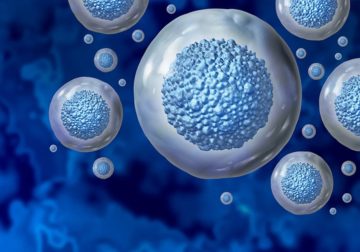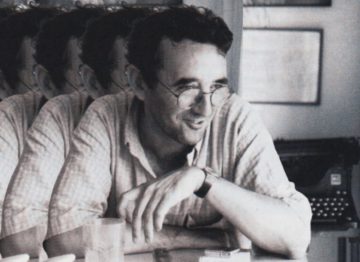Lana Hall at Hazlitt:
 When I finally did leave the sex trade after finishing my bachelor’s degree as a mature student, I spent seven years working in “good” jobs in the corporate sector. This meant, as I understood it, that I didn’t work nights, that I was a salaried employee, and that I had dental benefits. I had a shiny access card that opened doors—to a gleaming, marble elevator bank, to planters full of plastic ferns, to blocks of cubicles illuminated by fluorescent lighting, a land of perpetual daytime.
When I finally did leave the sex trade after finishing my bachelor’s degree as a mature student, I spent seven years working in “good” jobs in the corporate sector. This meant, as I understood it, that I didn’t work nights, that I was a salaried employee, and that I had dental benefits. I had a shiny access card that opened doors—to a gleaming, marble elevator bank, to planters full of plastic ferns, to blocks of cubicles illuminated by fluorescent lighting, a land of perpetual daytime.
Unlike sex work, my “good” jobs didn’t threaten to overthrow traditional power structures. Many sex workers, including myself, have long hypothesized that the reason so many people in power work to keep the commercial sex trade marginalized is because they’re threatened by it—by the idea that it’s the only field where women outearn men, that it’s an industry where women get to call the shots, and that women profit off something that men have been told they’re entitled to for free: sex and attention in equal parts. In my experience of the corporate landscape, there was none of this radical power structure, only an upholding of the traditional: men talking and women listening, men in powerful positions getting both credit and profit for the labour of women beneath them. Is this what I worked so hard for? I wondered daily.
More here.

 She was not beautiful, but she looked like she was. She was practically famous for it in the cloistered social universe of the liberal arts college where I had just arrived. Women whispered about her effortless elegance in the bathrooms at parties, and a man who had dated her for a summer informed me, with the dispassionate assurance of a connoisseur, that she was the hottest girl on campus. The skier who brazenly dozed in Introduction to Philosophy each morning intimated between snores that she looked like Uma Thurman, whom she did not resemble in the least. I knew this even though I had yet to see her for myself, because I had done what anyone with an appetite for truth and beauty would do in 2011, besides enroll in Introduction to Philosophy: I had studied her profile on Facebook—and discovered, much to my surprise and chagrin, an entirely average-looking person, slightly hunched, with a mop of mousy hair.
She was not beautiful, but she looked like she was. She was practically famous for it in the cloistered social universe of the liberal arts college where I had just arrived. Women whispered about her effortless elegance in the bathrooms at parties, and a man who had dated her for a summer informed me, with the dispassionate assurance of a connoisseur, that she was the hottest girl on campus. The skier who brazenly dozed in Introduction to Philosophy each morning intimated between snores that she looked like Uma Thurman, whom she did not resemble in the least. I knew this even though I had yet to see her for myself, because I had done what anyone with an appetite for truth and beauty would do in 2011, besides enroll in Introduction to Philosophy: I had studied her profile on Facebook—and discovered, much to my surprise and chagrin, an entirely average-looking person, slightly hunched, with a mop of mousy hair. Scientists have come to realize that in the soil and rocks beneath our feet there lies
Scientists have come to realize that in the soil and rocks beneath our feet there lies  Last week, Sinéad O’Connor took off on an early-morning bicycle trip around Wilmette, Illinois, a pleasant suburb of Chicago. The Irish pop singer—now forty-nine, and still best known for ripping up a photograph of Pope John Paul II on “Saturday Night Live,” in 1992, while singing the word “evil,” a remonstrance against the Vatican’s handling of sexual-abuse allegations—had previously expressed suicidal ideations, and, in 2012, admitted to a “very serious breakdown,” which led her to cancel a world tour. Ergo, when she still hadn’t returned from her bike ride twenty-four hours later, the police helicopters began circling. Details regarding what happened next—precisely where O’Connor was found, and in what condition—have been scant, but authorities confirmed her safety by the end of the day.
Last week, Sinéad O’Connor took off on an early-morning bicycle trip around Wilmette, Illinois, a pleasant suburb of Chicago. The Irish pop singer—now forty-nine, and still best known for ripping up a photograph of Pope John Paul II on “Saturday Night Live,” in 1992, while singing the word “evil,” a remonstrance against the Vatican’s handling of sexual-abuse allegations—had previously expressed suicidal ideations, and, in 2012, admitted to a “very serious breakdown,” which led her to cancel a world tour. Ergo, when she still hadn’t returned from her bike ride twenty-four hours later, the police helicopters began circling. Details regarding what happened next—precisely where O’Connor was found, and in what condition—have been scant, but authorities confirmed her safety by the end of the day. Behind cardiovascular disease, cancer is the second major cause of death in the United States and will likely cause
Behind cardiovascular disease, cancer is the second major cause of death in the United States and will likely cause  Even before Lee Iacocca sold the two-millionth copy of his autobiography, it was the most successful business book of its kind. More impressively, when that sales milestone was reached in July 1985, less than a year after its publication, Iacocca joined the ranks of America’s all-time bestsellers, regardless of genre, including Gone With the Wind and The Power of Positive Thinking. From his humble origins as the firstborn son of Italian immigrants, Iacocca distinguished himself as an engineer at Ford Motor Company before becoming CEO of the Chrysler Corporation in 1978, when it was on the brink of bankruptcy. Iacocca turned Chrysler around, paying back a government bailout and leading the former automotive straggler to the top of the car industry within a few short years. Highlighted repeatedly in Iacocca’s practically unavoidable TV commercials for Chrysler in the 1980s and ’90s, it was an American success story. But it was also something else, maybe something more: the creation of a new character on the American scene, the Celebrity CEO.
Even before Lee Iacocca sold the two-millionth copy of his autobiography, it was the most successful business book of its kind. More impressively, when that sales milestone was reached in July 1985, less than a year after its publication, Iacocca joined the ranks of America’s all-time bestsellers, regardless of genre, including Gone With the Wind and The Power of Positive Thinking. From his humble origins as the firstborn son of Italian immigrants, Iacocca distinguished himself as an engineer at Ford Motor Company before becoming CEO of the Chrysler Corporation in 1978, when it was on the brink of bankruptcy. Iacocca turned Chrysler around, paying back a government bailout and leading the former automotive straggler to the top of the car industry within a few short years. Highlighted repeatedly in Iacocca’s practically unavoidable TV commercials for Chrysler in the 1980s and ’90s, it was an American success story. But it was also something else, maybe something more: the creation of a new character on the American scene, the Celebrity CEO. A study of more than 38,000 young people has confirmed what researchers had begun to suspect: the COVID-19 pandemic precipitated a jump in cases of type 1 diabetes in children and teenagers. At first, researchers thought that the rise was caused by the virus itself — but it turns out that is probably not true. Nevertheless, with the overall cause of type 1 diabetes still a mystery, the findings offer new mechanisms for researchers to explore.
A study of more than 38,000 young people has confirmed what researchers had begun to suspect: the COVID-19 pandemic precipitated a jump in cases of type 1 diabetes in children and teenagers. At first, researchers thought that the rise was caused by the virus itself — but it turns out that is probably not true. Nevertheless, with the overall cause of type 1 diabetes still a mystery, the findings offer new mechanisms for researchers to explore. Narendra Modi, the 72-year-old Hindu activist from Gujarat, has been prime minister since 2014. His father was a railroad station tea seller. A rare member of India’s “backward” castes to reach his country’s top post, he is the antitype of the urbane Nehru, and the movement he leads is the antithesis of Congress as Nehru reshaped it. Under Modi’s leadership the BJP, founded in 1980 and focused on the aspirations of the 80% of Indians who are Hindu, has become the world’s largest political party. Political scientists say India has moved on to a “second party system” with the BJP at its center, much as the first party system was dominated by Congress.
Narendra Modi, the 72-year-old Hindu activist from Gujarat, has been prime minister since 2014. His father was a railroad station tea seller. A rare member of India’s “backward” castes to reach his country’s top post, he is the antitype of the urbane Nehru, and the movement he leads is the antithesis of Congress as Nehru reshaped it. Under Modi’s leadership the BJP, founded in 1980 and focused on the aspirations of the 80% of Indians who are Hindu, has become the world’s largest political party. Political scientists say India has moved on to a “second party system” with the BJP at its center, much as the first party system was dominated by Congress. The critical tide is turning, once again. The professional critics—and not just the old, curmudgeonly ones—are fed up with moralizing, and they are willing to speak about it in public. From Lauren Oyler’s observation that “anxieties about being a good person, surrounded by good people, pervade contemporary novels and criticism” to Parul Sehgal’s exhortation against the ubiquitous “trauma plot” that “flattens, distorts, reduces character to symptom, and … insists upon its moral authority” to Garth Greenwell’s lament about a literary culture that “is as moralistic as it has ever been in my lifetime”—the critical vanguard has made its judgment clear. For all its good intentions, art that tries to minister to its audience by showcasing moral aspirants and paragons or the abject victims of political oppression produces smug, tiresome works that are failures both as art and as agitprop. Artists and critics—their laurel bearers—should take heed.
The critical tide is turning, once again. The professional critics—and not just the old, curmudgeonly ones—are fed up with moralizing, and they are willing to speak about it in public. From Lauren Oyler’s observation that “anxieties about being a good person, surrounded by good people, pervade contemporary novels and criticism” to Parul Sehgal’s exhortation against the ubiquitous “trauma plot” that “flattens, distorts, reduces character to symptom, and … insists upon its moral authority” to Garth Greenwell’s lament about a literary culture that “is as moralistic as it has ever been in my lifetime”—the critical vanguard has made its judgment clear. For all its good intentions, art that tries to minister to its audience by showcasing moral aspirants and paragons or the abject victims of political oppression produces smug, tiresome works that are failures both as art and as agitprop. Artists and critics—their laurel bearers—should take heed. To say that Patchett is evangelical about books is no mere cliche. In one of her essays, she compares her zeal to that of a Hare Krishna devotee she met many years ago who spent every day proclaiming his love of God to strangers in Chicago airport. “I would stand in an airport to tell people how much I love books, reading them, writing them, making sure other people felt comfortable reading and writing them.”
To say that Patchett is evangelical about books is no mere cliche. In one of her essays, she compares her zeal to that of a Hare Krishna devotee she met many years ago who spent every day proclaiming his love of God to strangers in Chicago airport. “I would stand in an airport to tell people how much I love books, reading them, writing them, making sure other people felt comfortable reading and writing them.” “We never stop reading, although every book comes to an end, just as we never stop living, although death is certain.” This certain death came tragically early for the Chilean poet and novelist Roberto Bolaño, writer of that lapidary sentence, who died twenty years ago this month at the age of 50.
“We never stop reading, although every book comes to an end, just as we never stop living, although death is certain.” This certain death came tragically early for the Chilean poet and novelist Roberto Bolaño, writer of that lapidary sentence, who died twenty years ago this month at the age of 50. Even today, no one is
Even today, no one is